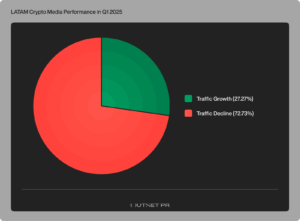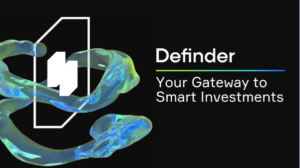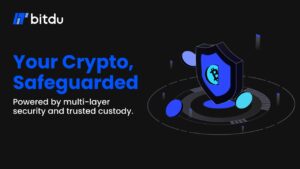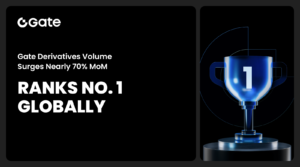
The buying and selling of photos, memes, music, trading cards and other digital artworks as crypto-art has exploded with the popularization of NFTs (Non-Fungible Tokens), a digital certificate that has created a million-dollar market for buying and selling digital files paid for with crypto currencies.
The buying and selling of photos, memes, music, trading cards and other digital artworks as crypto-art has exploded with the popularization of NFTs (Non-Fungible Tokens), a digital certificate that has created a million-dollar market for buying and selling digital files paid for with crypto currencies.
The world of NFTs work, crypto art and digital collectibles is attracting more and more attention – which also raises many questions for those who are just getting acquainted with this new world. You are probably asking yourself “after all, what is NFT and why would anyone buy a digital file since it is so easy to copy such a file on the internet”, right? We explain this and much more below.
The guarantee that you can buy a “real” digital version of a work quickly made this market overvalued, especially since it is traded via crypto currencies such as Ethereum. Not regulated by any central bank, this virtual money is guaranteed by “blockchains”, computer networks that prevent fraud and balance the quotation of these currencies.
“NFT” stands for non-fungible token, which is a unique code that cannot be replaced, and functions as a certificate of ownership linked to a digital product – an illustration, a meme, or a photograph, for example. In the world of physical assets, it would be equivalent to the deed to a house.
So, in simplified form, NFTs are tokens generated from a blockchain and serve to give a specific item a sort of unique identity, like an official rare item seal.
It is considered crypto-active: it carries the promise of being worth something in the future, which differs it from a cryptocurrency, which has a daily quotation (like bitcoin, for example).
Its transaction takes place on a decentralized internet network called Ethereum (from the Ether cryptocurrency), where information is recorded and secured by cryptography. Other blockchains such as Flow, and the Binance Smart Chain (BSC) network also support non-fungible tokens.
The fact that it is non-fungible means that it cannot be exchanged for another token. It is the opposite of the logic of currency: a $100 bill or five $1 coins have the same value.
And just to be clearer: when talking about “rare items”, don’t just think of things like diamonds or something. NFTs can be attached to anything you want – anything at all.
In this way, the owner has a digital asset and also proof of ownership. You can imagine the NFT as an intellectual property certificate.
NFT can be used in transactions of digital assets including art, games, and collectibles. However, it is in digital work that crypto-collectibles are really bringing about major changes.
Similarly to bitcoin NFTs are created virtually and protected by the dynamic workings of the blockchain and its consensus algorithm. In this way, the record cannot be modified, because this consensus inherent in the blockchain guarantees the integrity of the tokens generated.
Find more information about the platform and NFTs at https://weplaycollectibles.com/
What is NFT Crypto?
Crypto Art is digital artwork attached to a type of digital signature registered on blockchain. In other words, it is an image file (of any extension: JPG, PNG, etc…) that carries with it an inseparable and immutable certificate (token) of authenticity and origin, capable of introducing scarcity and value to digital artwork.
In summary, crypto-art is like pieces of digital artwork, which can be in image, GIF, 3D modeling, or video format. These files are fully authenticated using the Blockchain network, which guarantees the authenticity and originality of each work.
How does Crypto Art work?
Artworks can be authenticated and offered for sale by their authors, through platforms that take care of encrypting the information and act as intermediaries.
The format in which digital art is encrypted is called non-fungible token (NFT). NFTs have become digital assets that, unlike cryptocurrencies like Bitcoin, non-fungible tokens are unique in their existence. That is, no NFT is the same as another. Each one corresponds to an original digital file.
Crypto Arte, NFT and Smart Contracts
The tokens used in Crypto Arte are NFTs (acronym for non-fungible tokens). This means that each token is unique, and refers to a single artwork. Unlike those used in cryptocurrencies, NFT tokens cannot be divided into smaller parts.
In this way, all transactions performed with that artwork (owner history, values, and other information) are recorded on the blockchain, making trading of the asset more transparent.
Another very important differential is the possibility of attaching Smart Contracts to the token, according to the need. These allow all legal issues involving the trading of the asset to be automatically inserted and deliberated. For example, transferring a commission to the author whenever the artwork is renegotiated by a third party. The possibilities of smart contracts are many.
How important is Crypto Art?
Until recently it would have been impossible to imagine that a JPG file could be sold, even more so for such high values. Therefore, it is too early to estimate what the real impact will be on the creative world.
On one hand, we have technology allowing the introduction of new languages or even a new movement to the commercial art market (digital illustration, generative art, gif art, video, virtual reality, AI, etc). On the other hand, we have traditional collectors and new people looking at the collectibles market on a global level.
Undeniably, artists and creatives are facing a new world of possibilities to monetize their creations.
In this digital world, new terms and concepts have emerged, many new enough that we are unaware of their existence, an example of which is crypto-art. Crypto-art is a new form that has emerged involving technology, for this technology called blockchain used , which consists of an encrypted block chain to which the user has access only.
Blockchain is a platform for exchanging cryptocurrencies like Bitcoin and Dogecoin They consist of digital coins or tokens purchased with real money, which can be exchanged, invested etc. Similarly, each NFT has a value and can be used as a currency of exchange, as it is considered a digital asset with added value.
With blockchain technology, each transaction is stored as a node in the network, so each block attests to the chain of movements the piece had. In the same way that cryptocurrencies can be exchanged, so can crypto-art; a purchase of the authorship of the piece is generated. By purchasing a piece, the buyer will obtain it digitally.
What is the utility of NFTs?
Imagine that there is only one certain painting in the physical art world, a rare piece, for example the Mona Lisa. Wouldn’t it be great if you could guarantee with 100% certainty that it is the original? And that it has not been stolen, because you know exactly who owns it? It may sound too good to be true, but that is what NFT does.
Think of the non-fungible tokens as a seal that authenticates that the work of art is original. This seal not only guarantees who the painter behind the creation is – which would already be a milestone that would put an end to a lot of counterfeit work in the world.
The non-fungible token also shows the entire transaction history behind that work, in a way that cannot be erased or modified. In other words, you also know who the actual owner of that artwork is.
This is possible because of the registration of each token on the blockchain. By connecting the artwork to the decentralized network, it is the same as digitally registering a code that will be immutable.
This is especially interesting not only for painters, but for creative people in general, such as musicians, composers, writers.
Everything that permeates this artistic universe can not only be valued for its authenticity and originality, but also resolves many intellectual property issues more easily, because the control over a work is really the original owner, without question. And if he decides to sell digital art, that’s fine too, because it will be registered there on the blockchain.
The digital artist also earns more fairly for his work, since it is quite common in the art world for large companies to take a large part of the profit – as is the case with books, or in the music industry, for example.
However, since NFT art is sold by the artist himself to someone else, he receives it without intermediaries. So it is also possible to receive the royalties for the creation more easily.
In the same way, the creator of the NFT can sell it as a unique original – that is, only that one exists worldwide, as well as determine how many replicas of that creation there are.
So there may be identical items of the same artwork, but they are like limited run vinyl records. And they are all properly identified and registered on the blockchain.
NFT is currently tied to the digital world, but there are already reports of people experimenting with the technology for physical objects – although some technical issues are still being ironed out.
Characteristics of NFTs
Essentially NFTs are tradable in a different way than fungible cryptocurrencies, and require dedicated trading platforms.
- Unique: each NFT has special information and attributes that make it distinct from any other, allowing each individual token to have different levels of scarcity and value.
- Non-exchangeable: NFTs are unique, and cannot be exchanged because they have different values. The tokens are created on the Ethereum blockchain under a standard.
- Non-divisible: NFTs are not divisible. The elementary unit is the token that represents some physical or digital value. If the token represents a key, it would be meaningless to use a fraction of a key for anything, or even if the token represents a degree, it is unique and cannot be divided into fractions.
Applications of NFTs
NFTs can represent many unique things in the digital world and in the physical world, having a wide range of applications in situations where it is necessary to represent a unique thing with a digital token that cannot be copied.
- Collectible tokens
- Game digital tokens
- Security tokens: real estate, art, collectibles
- digital real estate
- Certificates: IDs, certifications, diplomas, licenses, serial numbers, etc.
- Copyrights
- Other applications.
How does the transaction with NFT work?
In more detail, NFT is stored in the Ethereum Blockchain, which supports the storage of extra information that differentiates a cryptocurrency like Bitcoin from an NFT. Briefly, the Blockchain allows one to track the exchange of certain information over the internet by creating a network of blocks between the computers involved in that exchange – the more transactions, the more this network grows. Therefore, any purchase or sale of digital art involving NFT will be recorded in detail in the Blockchain.
One of the first uses of NFT and a good example for you to understand how NFT art is the case of CryptoKitties, a game launched in 2017 as one of the first attempts to implement Blockchain in recreational activities – it is based on the Ethereum network as an NFT.
Players can collect, buy and sell CryptoKitties (they are virtual cats). Each CryptoKitty is a unique and guaranteed property of the player responsible for it – this means that it cannot be replicated, removed or destroyed, not even by the game developers.
CryptoKitties are a good way to understand what NFT is: each kitty is unique, has different value, and cannot be replicated or destroyed.
Chris Torres, creator of Nyan Cat, auctioned off a remastered version of the meme that gained popularity 10 years ago and raised 300 ETH, equivalent to about $600,000.
American youtuber Logan Paul created artwork of himself holding anime-style Pokémon cards and turned it into an NFT, or non-fungible token, a new kind of digital asset. He then determined that a stock of 3,000 units would be sold for 1 Ethereum (Ether) each. In total, the influencer made more than $5 million.
Jack Dorsey, co-founder and CEO of Twitter, sold from his first tweet in NFT – even the highest bid was $2.9 million. Does this mean that the tweet will disappear from the social network? No (unless Dorsey or Twitter itself decide to delete the record), it just means that the buyer will get a digital certificate confirming that he owns this asset.
Another example of NFT sales is the case of Trevor Andrew, an artist who has had work exhibited in several places around the world. In 2016, he created his own collection within the Gucci label and turned them into non-fungible tokens (NFTs), that is, in GIF format, and they sold for $3,600
What has made the NFT market extremely popular is the case of Mike Winkelmann, also known as Beeple, who sold his artwork, Everydays – The First 5000 Days, at auction at Christie’s for $69 million. This is an impressive achievement because it is the first NFT artwork to be auctioned at Christie’s.
Everydays – The First 5000 Days by digital artist Beeple, has become the third most expensive work of art by a living artist. Only the artworks of Jeff Koons and David Hockney lead the ranking.
What is the point of NFT?
They are mainly useful in applications that require unique, digital items, such as digital art, collectible cards, and in-game items.
In fact, these are the most obvious strands, but because it is a new technology, only time will show all the applications.
Currently, the segments that have most explored the NFT potential are digital arts and blockchain games, but there are already ideas and projects for applications in the music sector and even patents.
How to buy crypto art?
An artist can create artwork, whether digital or physical, and make it available on auction platforms such as OpenSea, Rariable, and Nifty Gateway. The user who is interested will need to create an Ethereum wallet and bid to buy, and if the bidder is the winner, they will receive ownership of that piece, and those who did not take will get their Ethereum back.
But isn’t each NFT unique?
Yes, if we consider that each NFT is a unique token on the Blockchain, we can say that each NFT is unique. Also, since it is widely used in the digital art medium, in which there are many collectors, it is important that there is a single crypto-collectible referring to the piece in question.
However, this does not prevent a person from creating and selling NFTs (unique, as each one is a different token) referring to the same piece. Of course this would also decrease the value of the item and, depending on how the transaction is negotiated, the credibility of its creator.
Why pay for an NFT when I can save the photo or video on my computer?
Unless you are an art collector, as well as an enthusiast for crypto-collectibles, you will probably not buy an NFT. The token is very important for artists as it serves as a unique asset that can be sold or exchanged with all the information of all transactions recorded in detail on the Blockchain technology. In addition, the NFT is the only way for anyone to make money from the piece of art in their possession, as they will be its sole original owner.
For ordinary people, this is probably a bit far from their realities or ambitions, as the art is literally a click away to be saved and viewed on their computer.
Furthermore, there is the possibility to gain from the appreciation of the art or popularity of the artist, being able to sell the piece years later for a much higher value (which is what happened with the video made by Beeple, bought and then sold by Rodriguez-Fraile for a value much higher than the first transaction).
Another advantage of NFTs for artists is that they can automatically add royalties to the contracts signed when the assets are sold. In this way, even if the token is sold several times later for a much higher price than the first transaction, the artist will still receive a portion of the money from the sales forever.
Although the NFT token can be used to buy and sell any digital item -some consider a tweet a commercial product-, the idea has been embraced by the digital art market.
As with e-commerce, NFTs are starting to gain showcases for artists and collectors.
In the same way that cryptocurrencies emerged and caused such strangeness to those who had no idea what they were, this did not prevent them from becoming known worldwide and, more than this, very valuable.
I’m a highly experienced and respected author in the field of Cryptocurrencies. I have written numerous articles and books on the subject, and my work is highly regarded by my peers. I have a strong understanding of the technology behind cryptocurrencies, and I am always up-to-date with the latest developments in the space. I am also an active investor in cryptocurrencies, and I have made a significant profit from investing in this new asset class. In addition to my writing and investment activities, I am also an active member of the cryptocurrency community, and I frequently speak at industry events.








